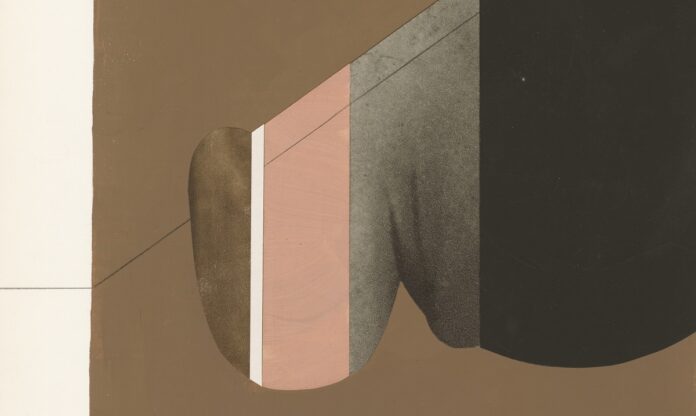With collage as the foundation of her work, artist Leigh Wells creates artworks more closely resembling paintings. Transcending the usual collage process, she expands the approach from paper into other media such as textiles, paint on canvas or panel, and wood constructions. She begins with raw materials, building spontaneously yet precisely, until she arrives at a resolution of color and shape—often with an illusory reference to these elements.
“I have mostly been considering these works as diagrams of mental or emotional states or as representations of imagined three dimensional objects or structures,” Wells told 48hills.
While there is occasional literal reference to the human figure and psyche in her work—as in her commissioned illustration for an article in the New York Times delving deep into philosophical renderings of isolation in the height of the pandemic—primarily her images play with simplified, geometric forms commingling with each other and with blank space. Abstractions, that leave plenty of room for interpretation, take us somewhere other than the obvious if we look more closely through the layers of these simple realities, much like consciousness itself, she seems to be presenting to us.
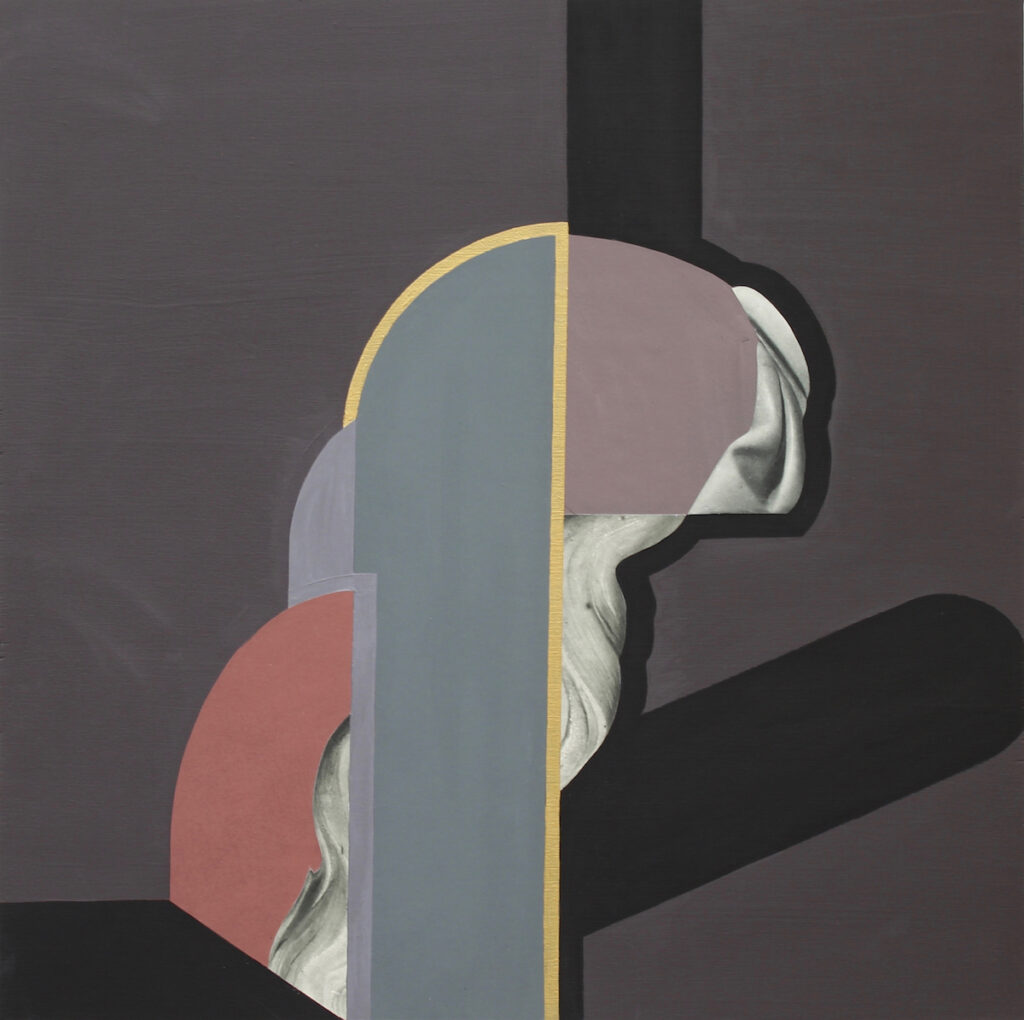
Wells was born in Oakland and grew up in the East Bay, living in San Francisco and New York for most of her adult life. She earned her BFA (1988) in Design at the University of San Francisco, graduating Summa Cum Laude, with subsequent studies at Parsons/New School and the NYC Crit Club in New York, and Crown Point Press and the San Francisco Art Institute in California. Prior to the pandemic, she lived in San Francisco, working at Minnesota Street Studios. In March of 2020, she moved to Marin County and has lived in Sausalito since February.
Her practice takes inspiration from artists such as Arlene Shechet, Jim Lee, Fran Shalom and, especially, Amy Sillman, whose works and writings Wells says have influenced her profoundly. She also mentions artist Lee Krasner as a woman in history she would like to spend the day with.
“She was a strong woman who thrived artistically despite the stunning sexism of her time. I especially admire her survival within a marriage to a narcissistic alcoholic and philandering husband. Not an easy feat,” Wells said.
She adds that one of the beautiful things Krasner made out of that complex relationship was founding the Pollock Krasner Foundation, which Wells cites as an organization that has benefitted her practice over the last year with its support: Wells was a Pollock-Krasner Foundation Grant recipient in 2022.
“I would like to thank Lee Krasner in person,” she said.
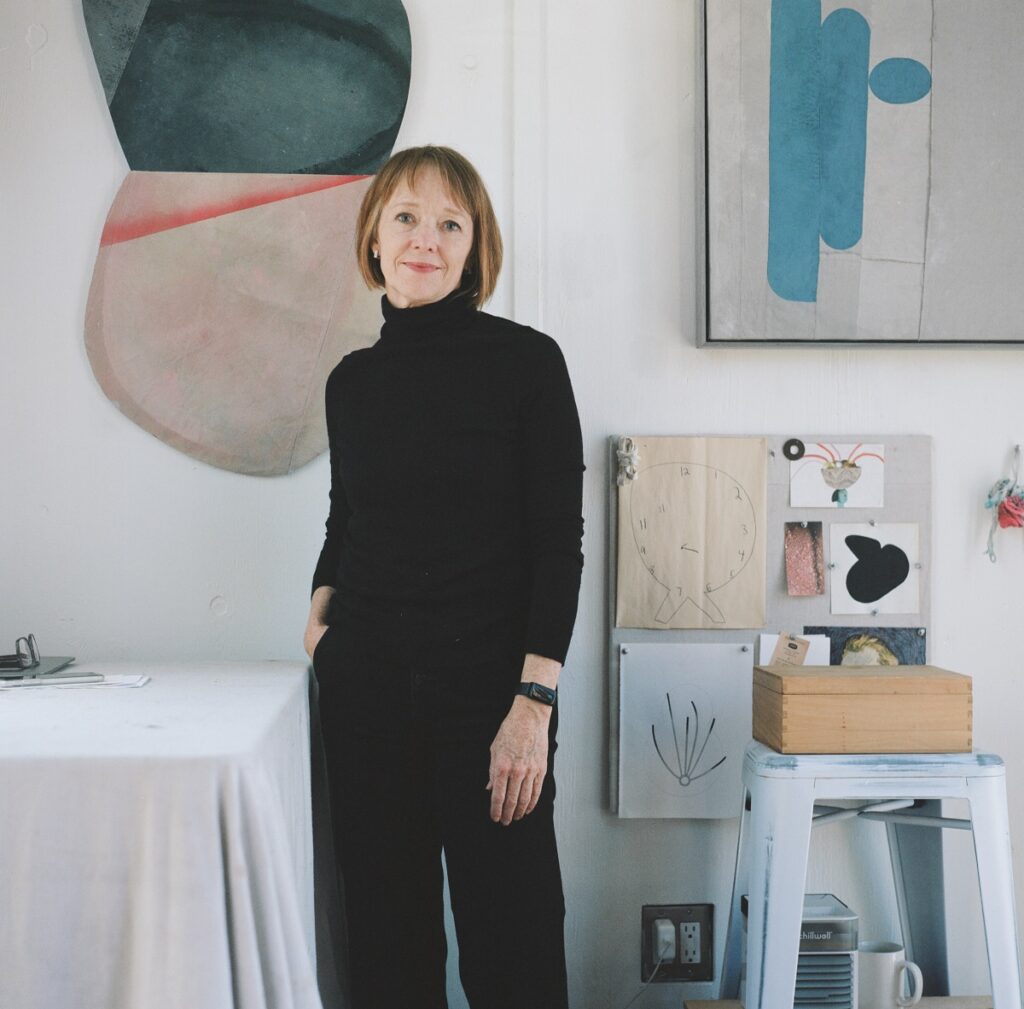
Working from a modified shipping container in Sausalito’s Marinship waterfront district, Wells is a short walk to the houseboats and harbors the city is known for. She enjoys the neighborhood’s mix of small business and maritime industry. Once inside her workspace, she gets busy assembling abstract paper collage and collage-like paintings on pieced textiles, works that consist of simple, restrained forms.
“I approach my practice as one of construction and repair, mending and restoring, reuse and reinvention. As such, my small studio is filled with painted papers, photo scraps, pieced fabrics, and glue,” Wells said.
Prior to devoting herself fully to an art practice, Wells had a long career as a commercial illustrator, which she describes as “distilling others’ thoughts in a visually accessible way.” With clients that included Harper’s, The New York Times, and Time Magazine, Wells learned visual communication and how to create strong conceptual relationships between objects. Slowly transitioning over the last 10 years or so to focus completely on her own art practice, Wells gravitated toward abstraction for its more open-ended trajectory, embracing mystery over clarity and certainty.
“Unlike most collage, which tends to be representational, my work is more related to abstract painting,” Wells said.
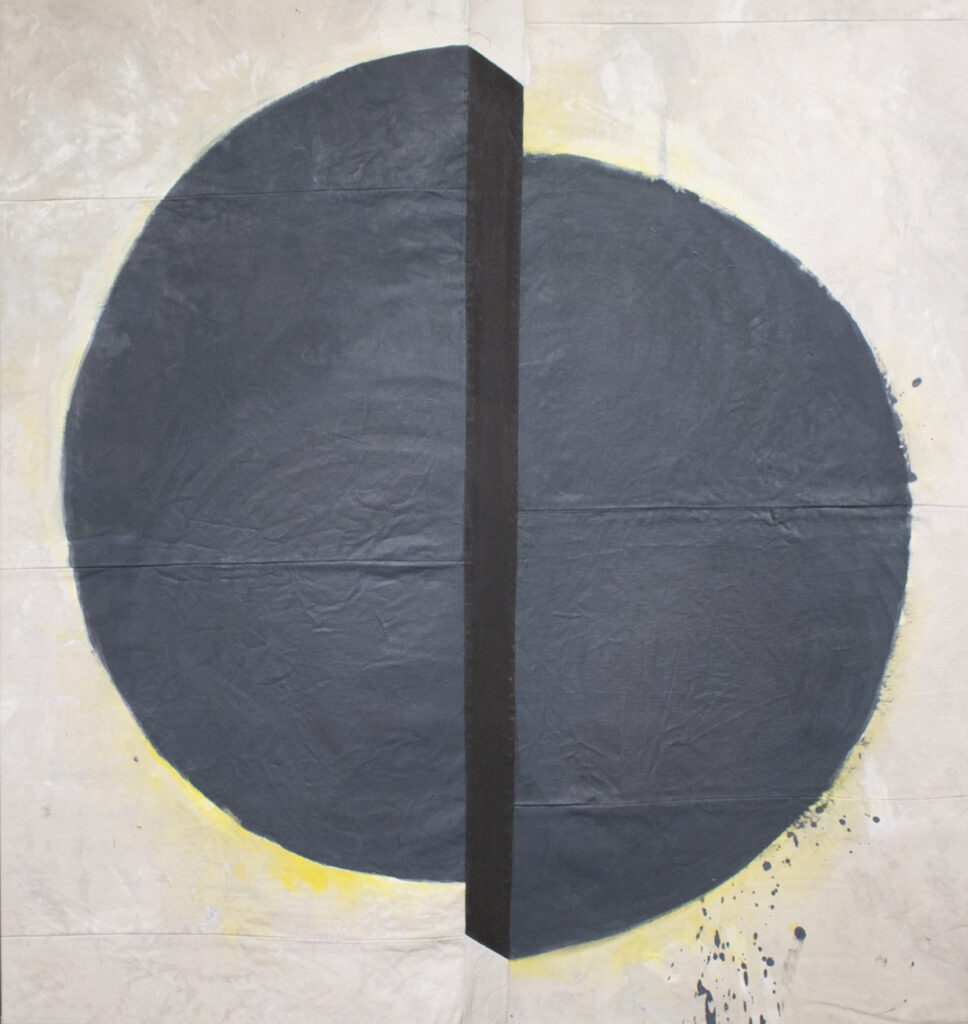
With forms evocative of deeply sensed mental and emotional states, she approaches the combination of elements in her work as though she is constructing a feeling, a thought, or a relationship. Utilizing repurposed materials, their own histories become integral, expressive elements in each piece. Her larger paintings on textile draw out and emphasize the inherent tactile sensual qualities of the fabric while introducing painterly marks onto the surface to create more impactful compositions.
“I am intentionally creating spatial and narrative ambiguity that heightens the work’s expressive tension,” Wells said.
The artist’s interests have consistently centered on the nature of consciousness and reality along with the act of making art. Raised in a religion that “purported to have very definite answers to the big questions” and in an environment that did not encourage curiosity or intellectual pursuits for women, Wells conversely developed a deep interest in metaphysics and psychology, which became the foundation of her art practice.
Her work has been called melancholic, strong, and stoic and the great care taken in her process of construction/reconstruction is evident in the work. From a metaphorical point of view, Wells uses the act of reparation, reconstruction, and reinvention with her materials to explore the interior region of life. She references a quote from artist Louise Bourgeois as a relatable thread in her own work:
“Art is restoration: the idea is to repair the damages that are inflicted in life, to make something that is fragmented—which is what fear and anxiety do to a person—into something whole.”
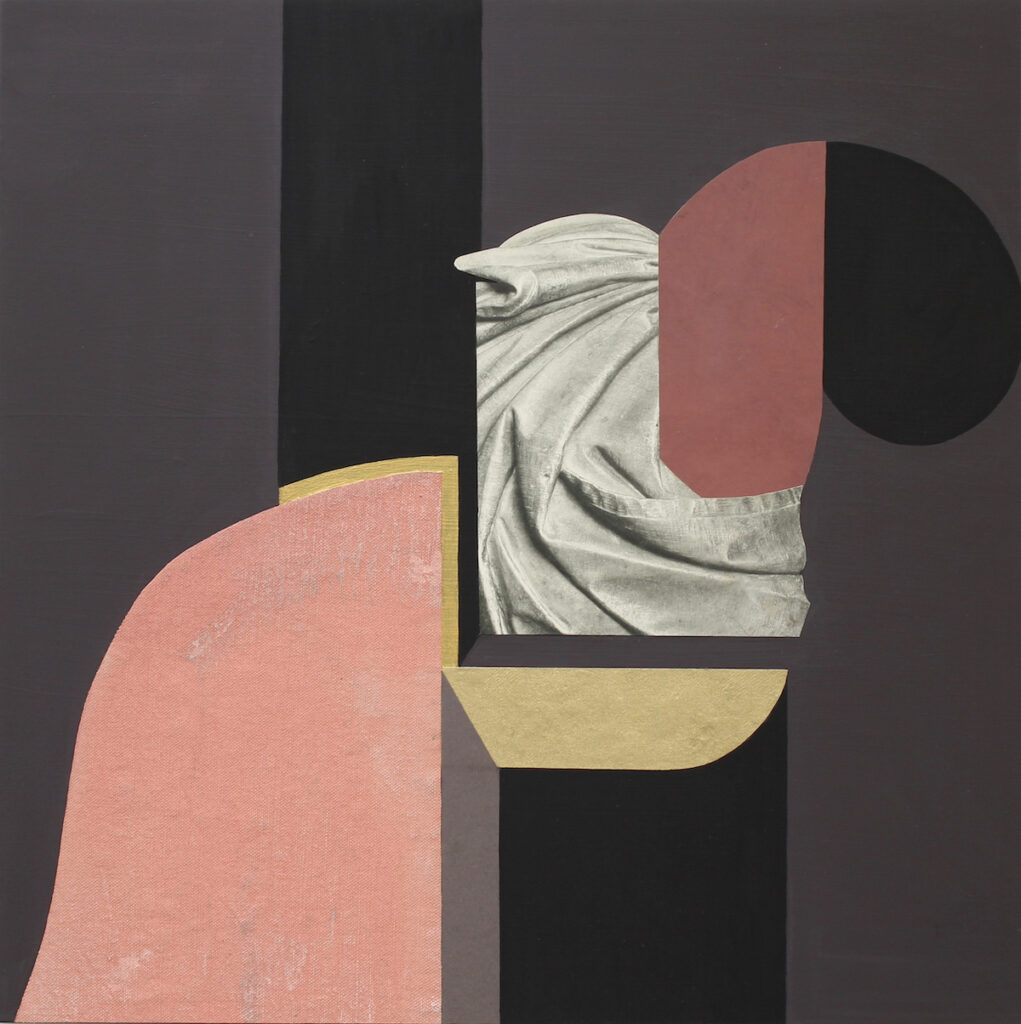
Accomplished in her career, Wells was a recent San Francisco Museum of Modern Art SECA Award nominee and is a visiting artist at Minnesota Street Studios. Her work has been shown in New York, Los Angeles, Berlin, Hamburg and Amsterdam. Bay Area solo shows include Gregory Lind Gallery, Ampersand International Arts, Gallery 16, and Jack Fisher Gallery (a two-person show).
Her recent solo exhibit, “Tensile Strength,” at Fourth Wall Gallery in Oakland, addressed the “resistance of a material to breaking under tension,” a parallel to our own unfaltering, timeless internal strength in the face of challenge. Also recent, Wells was included in the group exhibitions, “The Schuh Show” at Van der Grinten Galerie, Cologne, Germany and “True North” at the di Rosa Center for Contemporary Art in Healdsburg. In May, Wells exhibited collages on paper and panel at Hostler/Burrows in New York and participated in Open Studios in Sausalito.
Artist Leigh Wells continues her explorations, aiming to provide a visual shape-language at the intersection of consciousness and metaphor. “I keep things simple. And then stop before complication sets in,” she said.
For more information, visit her website at leighwellsstudio.com and her Instagram.

